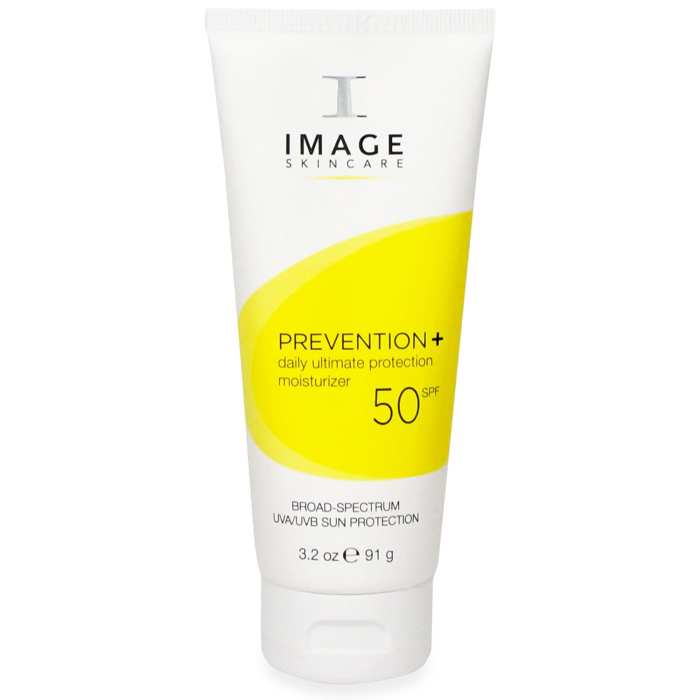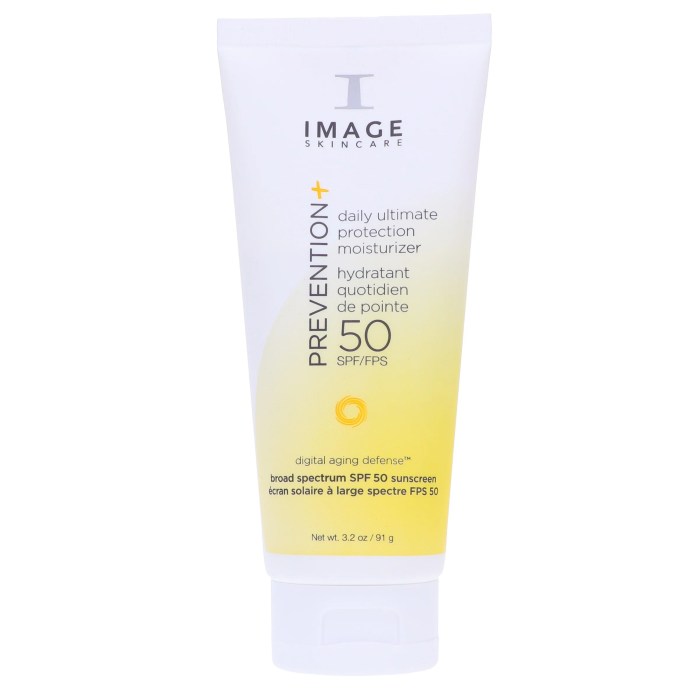
Product Types & Ingredients
Choosing the right daily SPF skincare product can feel overwhelming, given the sheer variety available. Understanding the different product types, key ingredients, and their interactions is crucial for effective sun protection and overall skin health. This section will provide a clear overview of these aspects to help you make informed decisions.
Types of SPF Skincare Products and their Ingredients
The following table Artikels common skincare product types that incorporate SPF, highlighting key ingredients, typical SPF ranges, and associated benefits. Remember that the specific ingredients and SPF levels will vary between brands and products.
| Product Type | Key Ingredients | Typical SPF Range | Common Benefits |
|---|---|---|---|
| Sunscreen Lotion | Octinoxate, Avobenzone, Zinc Oxide, Titanium Dioxide | 15-50+ | Broad-spectrum protection, lightweight feel, easy application |
| Sunscreen Cream | Oxybenzone, Octinoxate, Zinc Oxide | 15-50+ | More moisturizing than lotions, suitable for dry skin |
| Sunscreen Gel | Avobenzone, Homosalate, Octinoxate | 15-50+ | Lightweight, non-greasy, ideal for oily or acne-prone skin |
| Tinted Moisturizer with SPF | Titanium Dioxide, Zinc Oxide, various pigments | 15-30 | Provides sun protection and light coverage, suitable for everyday use |
| Day Cream with SPF | Hyaluronic acid, Vitamin E, SPF filters (chemical or mineral) | 15-30 | Combines sun protection with moisturizing and anti-aging benefits |
SPF Filter Types: Chemical vs. Mineral
Sunscreens utilize two main types of SPF filters: chemical and mineral. Chemical filters absorb UV rays and convert them into heat, which is then released from the skin. Mineral filters (zinc oxide and titanium dioxide) work by creating a physical barrier that reflects and scatters UV rays.Chemical filters, such as oxybenzone, avobenzone, and octinoxate, are often criticized for potential hormone disruption, although research on this is ongoing and the levels used in sunscreens are generally considered safe.
Mineral filters are generally considered safer and more environmentally friendly. They are also better suited for sensitive skin.
Active Ingredients in Daily Use SPF Skincare Products
Many daily SPF products incorporate additional active ingredients to enhance their benefits beyond sun protection.Retinol, a derivative of vitamin A, is a powerful anti-aging ingredient that promotes cell turnover and collagen production. However, retinol can increase sun sensitivity, making adequate SPF protection crucial when using it. It’s generally recommended to use retinol at night and a high SPF sunscreen during the day.Hyaluronic acid is a humectant, meaning it draws moisture from the air to the skin, resulting in improved hydration.
It’s compatible with most other ingredients and can be used in conjunction with SPF products.Niacinamide (vitamin B3) offers various benefits, including reducing redness, improving skin texture, and controlling oil production. It generally interacts well with other ingredients but can potentially interact negatively with high concentrations of vitamin C, causing irritation in some individuals.
Potential Ingredient Interactions in SPF Skincare Products
While many ingredients are compatible, certain combinations can lead to decreased effectiveness or skin irritation. For example, combining retinol with certain chemical SPF filters might reduce the effectiveness of the retinol. Similarly, mixing high concentrations of vitamin C with niacinamide can cause irritation for some. Always patch test new products before applying them to your entire face, and consult a dermatologist if you have concerns about potential interactions.
Application & Reapplication

Proper application and timely reapplication of your daily SPF skincare product are crucial for achieving optimal sun protection. Failing to do so significantly reduces the effectiveness of the sunscreen, leaving your skin vulnerable to harmful UV rays. This section details the correct techniques and addresses common mistakes to ensure you’re maximizing your sun protection.
Applying sunscreen effectively involves more than just slapping it on. A thorough and even application is key to achieving the SPF rating printed on the bottle. Remember, consistent application is as important as choosing the right product.
Step-by-Step Application Guide
- Cleanse and Dry: Begin with clean, dry skin. This allows for better absorption and prevents dilution of the sunscreen.
- Amount: Use a generous amount of sunscreen. A general guideline is about one ounce (shot glass full) for your entire body. For the face, a teaspoon is usually sufficient.
- Application Technique: Apply the sunscreen evenly to all exposed skin, including your face, ears, neck, and the tops of your hands. Don’t forget often-missed areas like the back of your neck and the tops of your ears.
- Rub In Thoroughly: Gently rub the sunscreen into your skin until it’s completely absorbed. Avoid harsh rubbing, which can irritate the skin.
- Wait Time: Allow the sunscreen to fully absorb before dressing, typically about 15-20 minutes.
Common Application Mistakes
Many people unknowingly make mistakes that compromise their sun protection. Understanding these errors and implementing corrective measures is vital for effective sun safety.
- Insufficient Amount: Using too little sunscreen is a major mistake. Applying less than the recommended amount significantly reduces the effectiveness of the SPF.
- Uneven Application: Missing spots or applying sunscreen unevenly leaves areas of your skin unprotected. Pay close attention to detail.
- Applying Too Late: Applying sunscreen just before sun exposure doesn’t allow sufficient time for absorption. Apply it at least 15-20 minutes beforehand.
- Forgetting Reapplication: Sunscreen’s protection fades over time, especially with sweating or swimming. Reapplication is essential for maintaining protection.
- Ignoring the Expiration Date: Expired sunscreen may not provide adequate protection. Check the expiration date and replace your sunscreen regularly.
Sunscreen Application Methods by Product Type
Different sunscreen formulations require slightly different application methods to ensure optimal effectiveness.
| Product Type | Application Method |
|---|---|
| Cream | Apply liberally and rub in gently until absorbed. Suitable for all skin types, especially dry skin. |
| Lotion | Apply evenly, rubbing in until absorbed. Generally lightweight and easily absorbed. |
| Spray | Hold the bottle 6-8 inches from the skin and spray evenly. Ensure complete coverage and rub in gently for even distribution. Reapplication might require more attention to ensure complete coverage. |
Reapplication Schedule
Reapplication is crucial for maintaining effective sun protection throughout the day, particularly after activities like swimming or excessive sweating. A consistent schedule ensures your skin remains protected.
A recommended reapplication schedule is every two hours, or immediately after swimming, sweating heavily, or toweling dry. For extended outdoor activities, more frequent reapplication may be necessary. For example, a day at the beach might require reapplication every hour or even more frequently depending on sun intensity and personal sweat levels. Remember to check the specific instructions on your sunscreen’s packaging as reapplication frequency might vary depending on the product’s formula and SPF rating.
Skin Concerns & SPF Product Selection

Choosing the right SPF skincare product depends heavily on your individual skin type and concerns. Not all sunscreens are created equal, and using an inappropriate formula can exacerbate existing issues or even create new ones. Understanding your skin’s needs is crucial for effective sun protection and healthy skin. This section will guide you through selecting the best SPF product for your specific skin concerns.
SPF Product Selection for Acne-Prone Skin
Acne-prone skin requires a gentle, non-comedogenic (won’t clog pores) sunscreen. Look for oil-free, lightweight formulations, preferably labeled “non-comedogenic” or “oil-free.” Ingredients to consider include chemical sunscreens like oxybenzone or avobenzone, as some mineral sunscreens can be thick and potentially pore-clogging. Avoid heavy creams and lotions, opting instead for gels or lightweight lotions. Always check the ingredient list to ensure it doesn’t contain ingredients known to trigger breakouts, such as certain oils or comedogenic emollients.
For example, a lightweight gel sunscreen with oxybenzone and avobenzone as active ingredients would be a suitable choice.
SPF Product Selection for Sensitive Skin
Sensitive skin requires a sunscreen that is fragrance-free, hypoallergenic, and free of common irritants like alcohol and essential oils. Mineral sunscreens, containing zinc oxide or titanium dioxide, are generally well-tolerated by sensitive skin due to their gentle nature. However, some individuals may still experience irritation, so patch testing a small area before full application is always recommended. Look for products specifically formulated for sensitive skin and avoid those with long lists of potentially irritating ingredients.
A good example would be a fragrance-free, hypoallergenic cream with zinc oxide as the active ingredient.
SPF Product Selection for Mature Skin
Mature skin often requires a more hydrating sunscreen to combat dryness and wrinkles. Look for formulas that contain antioxidants like vitamin C or vitamin E, along with hydrating ingredients such as hyaluronic acid or ceramides. These ingredients not only protect against sun damage but also help improve skin texture and reduce the appearance of fine lines and wrinkles.
Thicker creams or lotions are often better tolerated by mature skin than lighter gels. A rich cream sunscreen containing zinc oxide, vitamin C, and hyaluronic acid could be a suitable option.
Potential Allergic Reactions and Skin Irritation from SPF Ingredients
While generally safe, some sunscreen ingredients can cause allergic reactions or skin irritation in certain individuals. Common culprits include oxybenzone, avobenzone, and preservatives like parabens. Mineral sunscreens (zinc oxide and titanium dioxide) are generally considered less likely to cause irritation, but individual sensitivities can still occur. Patch testing a new sunscreen on a small area of skin before widespread application is crucial, particularly for individuals with sensitive or allergy-prone skin.
If irritation occurs, discontinue use and consult a dermatologist. Reactions can manifest as redness, itching, burning, or even a rash. Knowing your potential sensitivities and choosing accordingly is paramount for safe and effective sun protection.
Product Reviews & Recommendations
Choosing the right SPF skincare product can feel overwhelming given the sheer number of options available. Understanding product features, ingredients, and user experiences is crucial for making an informed decision that best suits your individual needs and skin type. This section provides a curated list of well-regarded products, along with guidance on evaluating online reviews effectively.
Factors to Consider When Evaluating Online Product Reviews
Reading online reviews can be a valuable tool, but it’s essential to approach them critically. Consider the source of the review (is it from a verified purchaser? a known beauty influencer?), the reviewer’s skin type and concerns (do they share similar characteristics to yours?), and the level of detail provided (are the reviews specific and descriptive, or vague and generic?).
Look for consistent themes across multiple reviews, rather than relying on a single, potentially biased, opinion. Pay close attention to both positive and negative comments, as a balanced perspective offers a more realistic picture of the product’s performance. Finally, be wary of reviews that seem overly positive or negative, as these might be fake or exaggerated.
Recommended SPF Skincare Products
The following table presents a selection of well-regarded SPF skincare products, categorized by skin type and highlighting key ingredients and features. Remember that individual results may vary, and it’s always advisable to conduct a patch test before applying any new product to your entire face.
| Product Name | Skin Type | Key Ingredients | Notable Features |
|---|---|---|---|
| Supergoop! Unseen Sunscreen | All skin types | Silicone polymers, zinc oxide | Invisible, weightless formula; good makeup primer; broad-spectrum SPF 40 |
| EltaMD UV Clear Broad-Spectrum SPF 46 | Oily, acne-prone skin | Niacinamide, zinc oxide | Lightweight, non-comedogenic; helps reduce redness and inflammation; broad-spectrum protection |
| La Roche-Posay Anthelios Melt-In Sunscreen Milk SPF 60 | Sensitive skin | Mexoryl SX and XL, titanium dioxide | Very high SPF; fragrance-free; gentle formula; suitable for sensitive and reactive skin |
| Paula’s Choice RESIST Super-Light Daily Wrinkle Defense SPF 30 | Mature skin | Antioxidants, niacinamide, zinc oxide | Lightweight, hydrating; addresses wrinkles and fine lines; broad-spectrum protection |
| CeraVe AM Facial Moisturizing Lotion with SPF 30 | Dry, sensitive skin | Hyaluronic acid, ceramides, zinc oxide | Hydrating, non-irritating; suitable for dry and sensitive skin; broad-spectrum protection |




